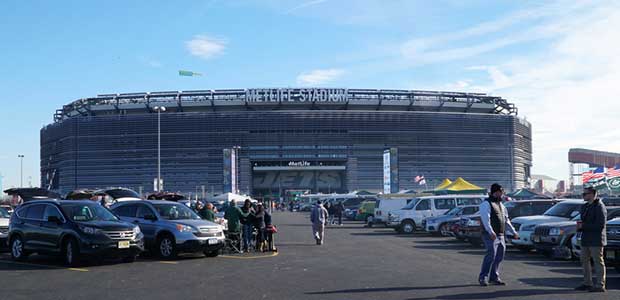
The Environmental Impact of No Sports During the Pandemic
The shutdown of major league sports teams and seasons during the COVID-19 pandemic has left sports fans across the U.S. sad. However, a recent study on the National Hockey League (NHL) shows the pandemic’s impact on sports, the environment and the leaders of the industry overall.
No sports has meant a devastating new reality for Americans. However, while fans are sad they are unable to congregate to watch their teams and many players are disappointed they will not be able to play in front of an audience, the shutdown of sports industries—especially the National Hockey League—has had some notable effects on the environment and overall carbon emissions.
The pandemic has had many impacts on the environment and global warming, but it is hard to label any of them “good” or “bad” given the overall situation and threat to public health. However, the postponement of the NHL has had undeniable impacts on the environment, and the impacts will be hard for future NHL leaders to ignore.
Since the NHL has been postponed, the NHL has reportedly prevented 200 tonnes of CO2 in carbon emissions, according to the NHL Emissions Report.
As the NHL says itself, its annual impact on the environment is massive: “The NHL features one of the biggest carbon footprint in world sport, with the NHL Emissions Report revealing that it produced more than 1,430 tonnes CO2 in carbon emissions in 2019 in travel to and from away fixtures, but recent development show just how the global lockdown has had a positive effect on the environment.”
The results of the report revealed the NHL’s overall change in emissions, but it also points out each team’s impact on the situation. The report shares that “latest research shows that due to the games postponed by the league—which started on March 12—means that 206t CO2 has been saved from being spread into the environment by the 31 teams in the NHL, after calculating the average CO2 produced by each side in their remaining fixtures.”
What does that mean exactly? Sometimes, it’s helpful to see visual comparisons:

According to the report, that 206t CO2 saved is the “equivalent to driving 463,722 miles in a car, or 22 homes’ energy use for one entire year.”
You might be asking what the purpose of the NHL Emissions report is. Any responsible organization or business must look at the impacts of its actions on people, the environment and communities, and that is what the emissions report is aiming to provide.
“The NHL Emissions Report, produced by SpinSports, looks into the amount of travelling done by each team in the NHL to expose how the league is producing far more in terms of emissions than is normal, and the damage the regular league season is doing to the environment.”
Because of the nature of their jobs and industry that work in, NHL athletes tend to have a carbon footprint that is eight times worse than the average person, based on 2019 statistics.
Leaders from the NHL remind us that the impact of the NHL and its players on the environment is not one person’s fault—it is a byproduct of their schedules, games, seasons and overall operations.
Andrew Welfle from the Tyndall Centre for Climate Change Research at the University of Manchester told the NHL Emissions Report: “The carbon footprint of all major sports teams and its players is often several magnitudes higher than that of other people. In the majority of cases, the majority of the blame cannot be justified by the focus on specific teams and players—they have to travel to attend fixtures and keep to schedule.”
Nonetheless, the results of the Emissions Report speak volumes, and it is up to organizations to consider what to do next.
“It is the wider sports organizations that need to rethink the design of leagues and schedules, as this will be the only way to reduce the emissions of sports from an aviation perspective,” said Welfle. “At the minute sports teams do get away with the amount of travel they do both nationally and internationally. However with climate change and emissions rapidly rising up the agenda and with many countries developing tough emission reduction targets, the time rapidly coming when sport has to do its bit.”
Here is a graphic to put the Los Angeles Kings’ impact:

“Sport is still coming to terms with what needs to be done and have not yet grasped that they may need to make some hard decisions to decarbonize once all the ‘low hanging’ actions have been achieved,” said Welfle.
View the full study here: https://www.spinsports.com/projects/NHL-emissions/